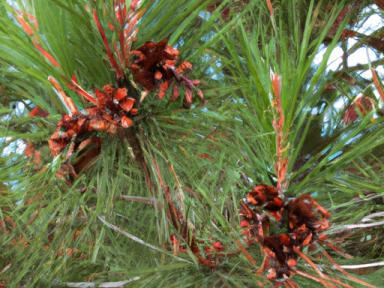
Pine Tree Delicacies: Turning Survival into Scrumptious
When it comes to survival and self-reliance, being prepared is of utmost importance. In times of crisis, knowing how to make the most of the resources around you can mean the difference between thriving and barely surviving. One such resource that often gets overlooked is the humble pine tree. Besides providing shade and shelter, did you know that various parts of the pine tree are also edible? Yes, that’s right! In this article, we will explore the many delicacies that can be found within a pine tree and how to prepare them.
1. Pine Nuts
Pine nuts are the most well-known edible part of the pine tree, and for good reason. These tiny, cream-colored nuts are not only delicious but also packed with nutrients. They can be harvested by collecting cones from the tree and allowing them to dry in a warm place. Once dried, gently tap the cones to release the pine nuts. Don’t forget to remove the papery husks before consuming or cooking with them.
Use pine nuts as a tasty addition to salads, pasta dishes, or even toast them and eat them by themselves. Their subtle flavor and creamy texture make them a delight in a wide variety of recipes.
2. Pine Needle Tea
In times of crisis, staying hydrated is vital. Pine needle tea can be a lifesaver, providing not only hydration but also a boost of essential vitamins. To make pine needle tea, gather a handful of fresh pine needles from a young pine tree. Make sure to choose needles that are bright green in color.
Boil water in a pot and add the pine needles, allowing them to simmer for about 10 minutes. Strain the tea and enjoy! Pine needle tea has a refreshing flavor and a pleasant aroma that is sure to lift your spirits even in the toughest of times.
3. Pine Bark Flour
Did you know that the inner bark of certain pine trees can be ground into flour? This flour can be used as a nutritious and gluten-free alternative in baking. To harvest pine bark, carefully peel away the outer layers of the tree trunk to reveal the inner bark. Allow the bark to dry completely before grinding it into a fine powder.
Pine bark flour can be used as a replacement for regular flour in bread, pancakes, or any other recipe that calls for flour. Its slightly nutty flavor adds an interesting twist to your culinary creations.
4. Pine Resin Salve
Pine resin, also known as pitch, has impressive medicinal properties. In a survival situation, it can be used to create a soothing salve for various ailments. To make pine resin salve, collect a small amount of pine resin, preferably from damaged or wounded tree branches.
Combine the resin with a carrier oil, such as olive oil or coconut oil, and gently heat the mixture until the resin melts. Once melted, strain the mixture to remove any impurities and pour it into a clean container. Allow the salve to cool and solidify before using it as a natural remedy.
Pine resin salve can be used for treating cuts, burns, rashes, and even insect bites. Its antiseptic and anti-inflammatory properties make it an essential addition to any survival kit.
Conclusion
When it comes to survival and self-reliance, it’s crucial to think beyond the obvious. Pine trees offer a plethora of edible delights that can sustain us in times of need. The next time you find yourself in the wilderness, remember to keep an eye out for pine nuts, pine needles, pine bark, and pine resin. With a little knowledge and preparation, you can turn these pine tree delicacies into nourishing and delicious treats.



GIPHY App Key not set. Please check settings